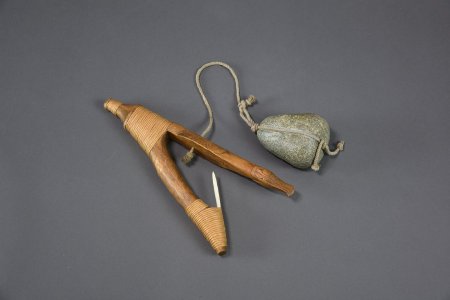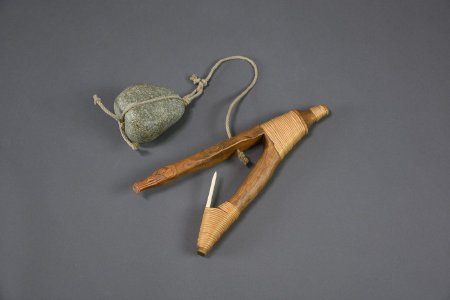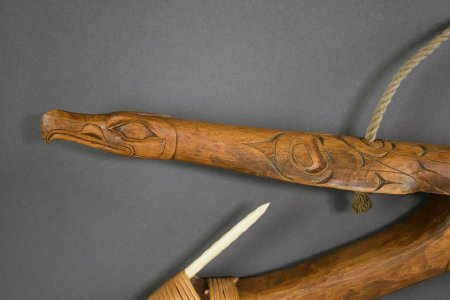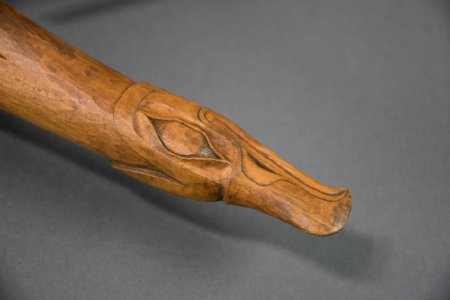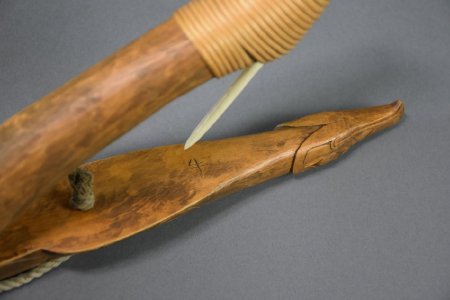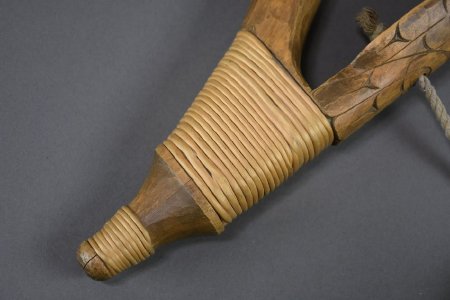Nuu
Halibut Hook, circa 1980
Jack Hudson
Tsimshian
Halibut hooks are made from two sections of wood lashed together to form a distinctive V-shape. The upper arm is carved from a light wood like yellow cedar, favored for its buoyancy. It floats above the lower arm that is carved from a heavier wood like Pacific yew or alder, favored for its longevity and toughness. One arm is usually carved with a symbolic design representing a clan or aquatic creature while the other has a sharp barb, traditionally made of bone and later, metal.
A baited hook is lowered to the sea floor with cedar bark or sinew line and stone sinkers. Octopus, salmon, fish eggs, or herring can be used for bait. The biting halibut's cheek catches on the barb and by design the more the fish struggles, the further entangled it will become.
This yellow cedar halibut hook has a bone barb and is carved with a cormorant bird design. The two sections are secured with spruce root lashings and a twine line is wrapped around a grooved rock weight.
Ketchikan Museums
KM 2000.2.72.1


